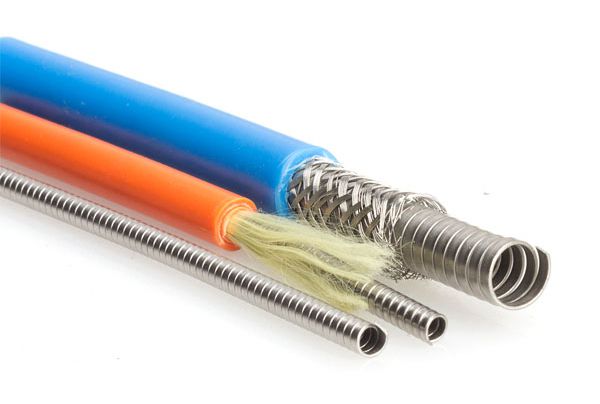Apr. 02, 2022
Conventional inner duct installation
Before the development of armoured indoor/outdoor optical cable, cable installation requires the installation of internal conduit. An inner tube is a plastic tube that is dragged into place to act as a conduit for optical cable and is rated according to its installation environment (such as a pressurized chamber or riser). An inner tube, usually orange or yellow, shields the internal cables and makes it easy to locate them.

Disadvantages of inner tube installation
Internal pipelines contribute a significant amount of cost to the project. The cost per foot of an internal conduit is usually higher than the cost of an internal fiber optic cable. Inner tube installation technology also quadruples the amount of manpower needed to complete the job. The installer must pull the inner tube into place before using the inner tube pull cable to pull the optical fiber. In addition, because the inner tube acts as a conduit for optical fiber, it is larger, takes up more space, and can be harder to install than the fiber itself.
Another disadvantage of the inner conduit is that it provides an easy path for any contractor who needs to lay cable in the same spot. As A result, contractor A installed the internal conduit and optical cable at their expense. Contractor B arrives and "borrows" the inner tube access for his own use, saving a lot of time and money. Contractor B also caused damage to optical elements by dragging wires beside it. Interlocking armored cable (orange, yellow and light green) and stainless steel micro armored cable consists of a unit, including internal cable, metal armored and outer sheath.
Types of armoured fiber optical cables
Indoor armoured optical cable and outdoor armoured optical cable are two kinds of armoured optical cable used in installation.
Indoor armoured optical cables consist of tightly sheathed or loose sheathed optical cables, stiffeners and inner sheaths, and are commonly used for indoor applications. A spiral coil of interlocking metal type armor surrounds the inner sheath. Armoured cables are not susceptible to temperature and mechanical stress, and most are used in building wiring applications, such as between walls, floors and pressurised air handling ducts.
Outdoor armoured optical cables are designed to ensure the safety of cables operating in challenging outdoor environments. Most loosely buffered optical fibers, stiffeners and loose sleeves make up the majority of outdoor armoured optical cables. The loose sleeves are filled with a waterproof gel that helps improve the water resistance of the cable.
Conclusion
Adequate protection is essential for safe and reliable function when transmitting data or power over fiber-optic cables in hazardous environments. Therefore, it is not only advisable, but necessary, to use armoured optical cables to protect wires from mechanical and environmental damage.

















